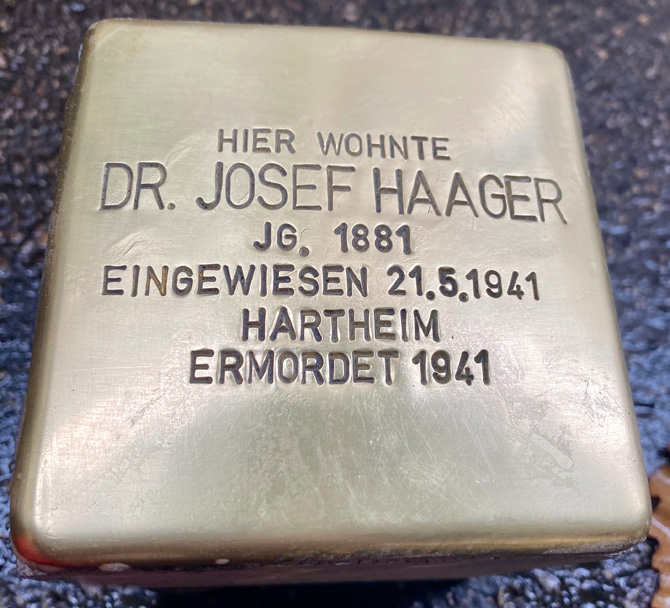Josef HAAGER, was born in Salzburg on August 25, 1881 and was baptized in the Roman Catholic Church. He was the older of the two children of Elise Schmidhammer Haager and Josef Haager.
Josef Sr. was the director of the Imperial and Royal Post- and Telegraph office at the Salzburg main railway station (Hauptbahnhof).
Elise Haager, the mother of the two children, Josef and Maria, died in 1901, and the widowed Josef Sr. died in 1920, after the Austro-Hungarian Monarchy was dissolved.
Their daughter Maria married an attorney and lived in Czechoslovakia, while Josef graduated from the state secondary school in Salzburg and received a doctorate in technical sciences from the Technical University of Vienna on December 17, 1904.
Dr. Josef HAAGER was only able to work as a technician for a few years before he was incapacitated by a mental illness. After a treatment at a spa in the Bohemian city of Reichenberg (now known as Liberec), he was admitted to the Salzburg State Asylum in 1913.
The diagnosis and course of the illness are documented in his patient file. Under the Nazi regime permanent inability to work was considered sufficient reason to murder sick patients.
On May 21, 1941 Dr. Josef HAAGER was one of 85 patients who were deported to the Hartheim killing center near Linz in Upper Austria where they were all murdered.
As with all the other victims of the Nazi’s secret »T4« 1 program, the death of 59-year-old Dr. Josef HAAGER was not recorded in the police registration files of the city of Salzburg.
His sister Marie E. Gierth survived the years of terror and died in London in 1964.
1 The »T4« program was named after the location of its main office at Tiergartenstraße 4 in Berlin.
Those primarily responsible for the killing of the handicapped in Salzburg were: the governor of Salzburg, Dr. Friedrich Rainer; Dr. Oskar Hausn, the head of the State Welfare Office; Dr. Leo Wolfer, the director of the Salzburg State Asylum (now called the Christian-Doppler-Clinic); and Dr. Heinrich Wolfer, the head of the genetic biology department of the Salzburg State Asylum.
Sources
- War Crimes Records of the U.S. Judge Advocate Division Headquarters (The National Archives Washington DC)
- Patient files (German National Archives, Berlin: Bestand R 179)
- Parish registers of the Salzburg Archdiocese
- Police registration and Local Citizenship registration files in the Salzburg City and Salzburg State archives.
Translation: Stan Nadel
Stumbling Stone
Laid 09.09.2024 at Salzburg, Franz-Josef-Straße 5


